Interview: Fender CEO Andy Mooney on the company's big plans to shake up home recording, huge challenges and why it's been successful reaching a new generation of guitar players
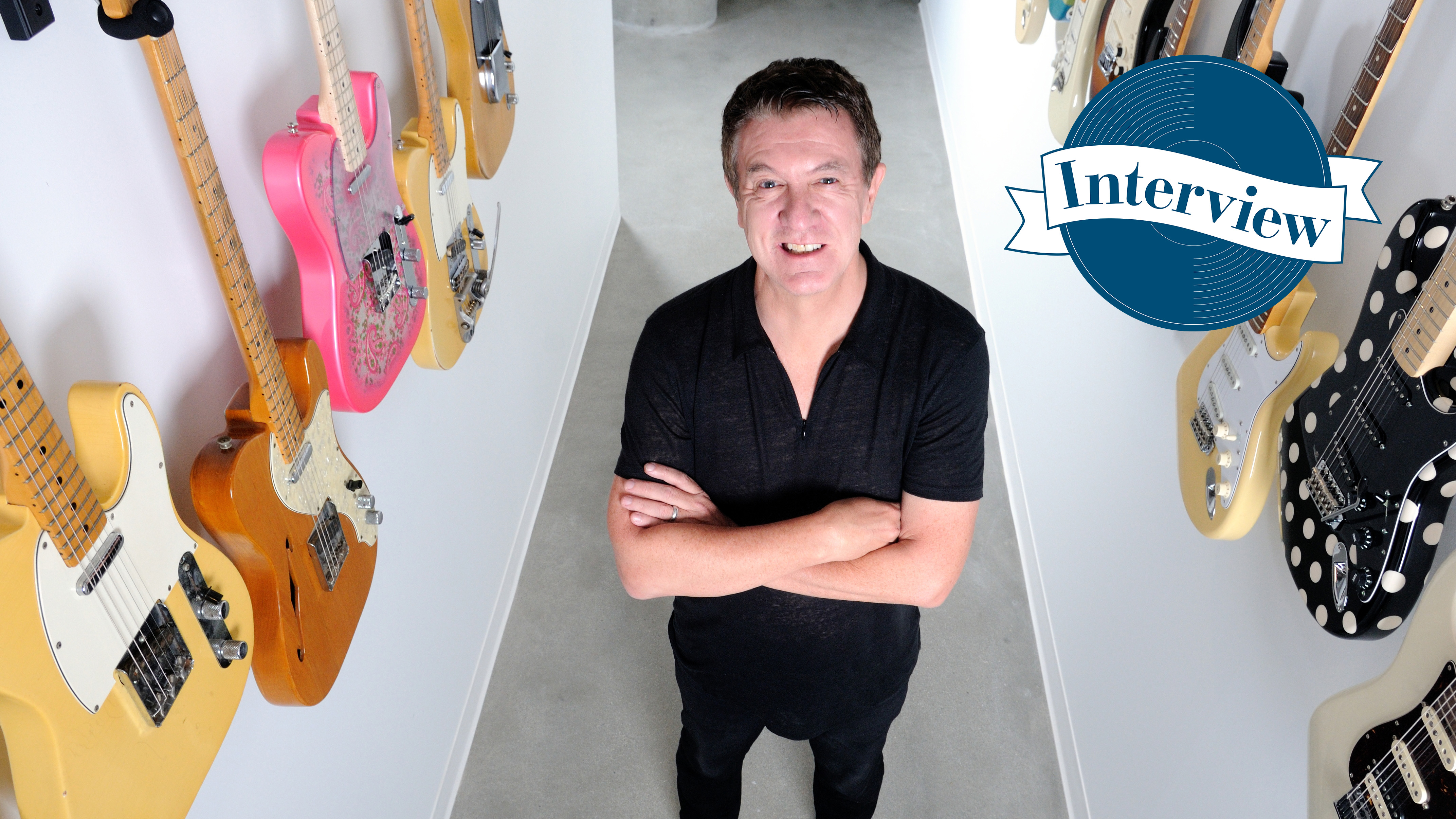
In 2017 The Washington Post wrote about the 'slow, secret death of the electric guitar'. Fender CEO Andy Mooney spent the next two years proving that headline wrong in his leadership of the guitar giant. But even he couldn't see what was coming.
In 2020 Fender has had its biggest ever year for sales. While the pandemic was bad news for many, it created an upswing in people picking up or returning to the acoustic and electric guitar during lockdowns. The company responded beyond the traditional supply and demand of stock; offering its Fender Play online learning service free for the first three months. A million people took it up on the offer.
A semi-pro guitar player before he moved to the US from the UK, Andy combines a love for Leo Fender's legacy as a passionate fan with an ambitious vision of how he can carry it forwards as the company's CEO. Fender Play and the success the Fender has had in reaching a new generation of musicians has shown how effective that combination can be. But as we find out in our talk when he visited Fender's UK HQ in London recently, Fender has big plans elsewhere too.
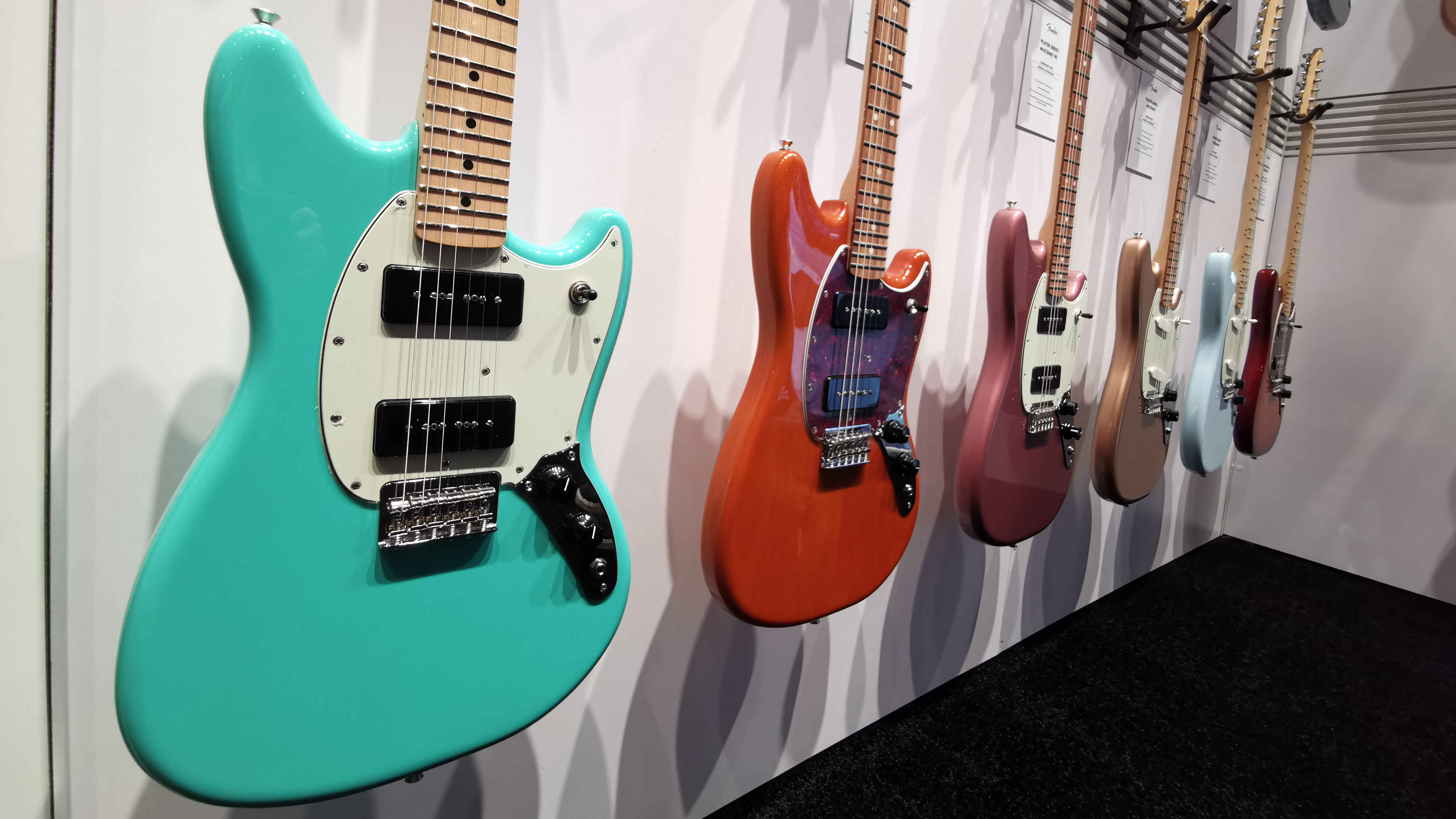
Never say never, but I don't see a lot of compelling reasons to return to NAMM in its current format
The NAMM show returned this year, and both 2020 and last year were huge for Fender, so does that affect the way the company will release products in the future?
"When I joined Fender in 2015, the industry cadence was that dealers came out of the holiday sales period and went to NAMM. NAMM happened in January as manufacturers and dealers needed to see how much open to buy was available post-Holiday to spend on new products with product launches happening in Q1. That's completely counter cyclical to how consumers buy. Players want to buy new products in Q4 more than they do in Q1, so we saw NAMM as fundamentally out of sync with the way that consumers bought.
"We moved to virtual presentations out of necessity during COVID and we're not moving away from them. At NAMM we able to talk to the senior leaders of key retail partners, but unable to go deep in their organisation or make elongated presentation of our new product features. With our online presentations, we can go right down to the sales associate level of retailers, at a fraction of the cost of participating at NAMM.
"Never say never, but I don't see a lot of compelling reasons to return to NAMM in its current format. Our motivation has always been to grow the industry and not just stealing market share. Stealing market share doesn't do anything for the retailer. We want to grow the entire industry and belief is that new product launches, supported by increasing levels of marketing, will drive industry growth and are spending the money we used to spend on NAMM participation on marketing to drive increased physical and virtual traffic to our dealers."
Want all the hottest music and gear news, reviews, deals, features and more, direct to your inbox? Sign up here.
The huge demand for guitar gear and the challenges to meet that demand over the last couple of years must have put incredible pressure on Fender. Did it change the way you now plan ahead as a company?
"It has, and a new programme we recently communicated to our dealers is a six-month futures programme. If you as a dealer commit your order to us six months in advance you get guaranteed price no matter what happens due to currency or cost pressures, and you get prioritised delivery. During a period of rampant inflation, currency volatility and on-going supply chain challenges, we felt this would be a real benefit to dealers.
"We'd like to offer guaranteed delivery as well but there's too many supply chain challenges to honestly commit to that, but certainly prioritised delivery. In exchange, we're offer retailers a significant increased margin opportunity. So we're trying to connect the dots across the supply chain to make it beneficial for the retailer, make it more predictable for us to plan."
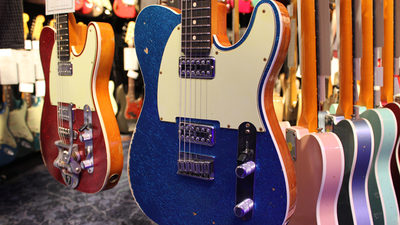
While we saw growth across the board, most of the growth came from the low end
Were there any areas of demand from customers during the pandemic that surprised you?
"If you go from Custom Shop to Squier, surprisingly every single segment grew. But the segments that grew most aggressively were the extremes; the opening price points and Custom Shop. think that people who had time and money said, 'Well, now is the time for me to place an order for a Custom Shop guitar.
"People who wanted to spend or [use the] sudden benefit of time they had at home, said, 'Now’s the time to learn how to play guitar', whether it's acoustic or electric. While we saw growth across the board, most of the growth came from the low end."
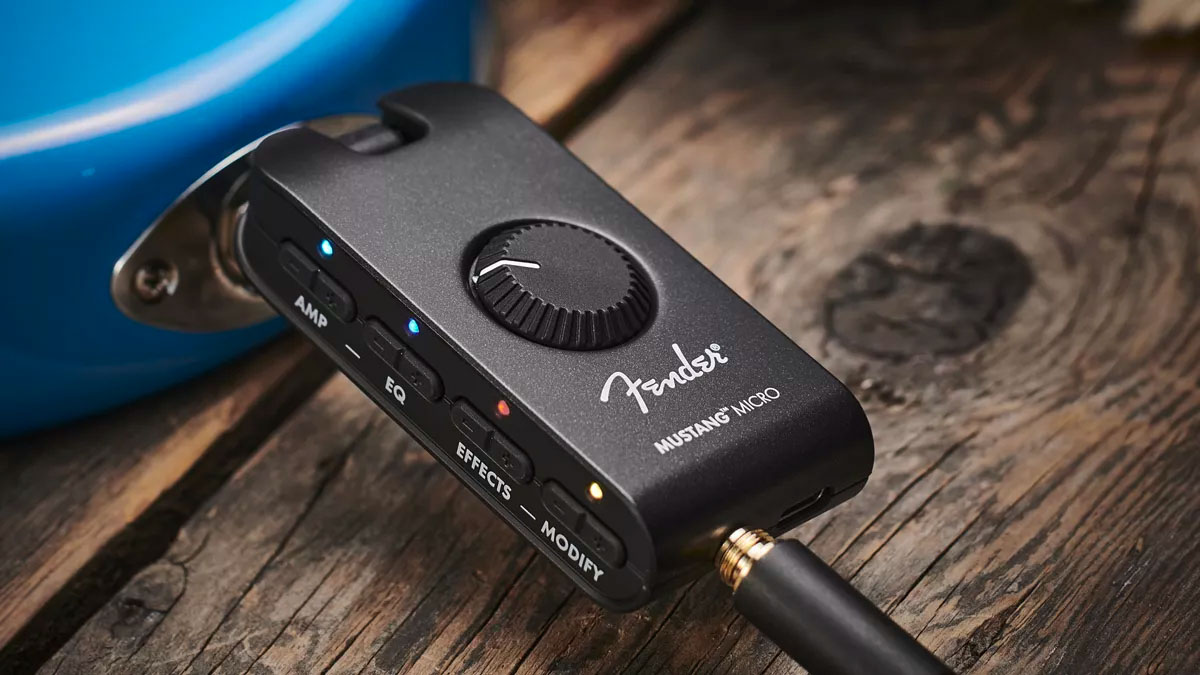
Reverb's top selling amp list of 2021 placed the Fender Mustang Micro at number one, that seems like it was the right product at the perfect time.
"I travel with it on the road all the time. It's like I never put it down now. I think even more so if you're a beginner, because I went through this in my early years, you don't want to be cranking up your amp in your bedroom or your living room with your parents yelling at you to turn it off.
"One of the interesting things that we learned – because the great thing about digital amps is the data that it provides you about what the consumer actually does – is the most used preset on our Mustang Series is 34. Which is the heaviest distortion preset we have. That's the one I use. I can just imagine parents listening to their son or daughter playing guitar for the first time, cranked up loud on the 34 amp setting and going, 'Get your headphones!' This solves that problem."
I grew up in an era of the guitar virtuoso; Richie Blackmore, Hendrix, etc. Those guys were unbelievably influential, but close to impossible to emulate
Could that kind of insight inform future plans?
"A lot of people have asked me that. It's funny, and taking a little walk down memory lane, I can't remember exactly what year it was but 2017 /2018, The Washington Post broke the headline, basically 'the guitar was dead'. Electric guitar was dead, the Guitar Hero was gone. Despite the fact that we gave them data that showed that the industry was in fact growing. They just liked that headline so wanted to get it out there. And it took me about two years really, to dispel that myth.
"I grew up in an era of the guitar virtuoso; Richie Blackmore, Hendrix, etc. Those guys were unbelievably influential, but close to impossible to emulate. And then came punk. If you could play three chords, and you had enthusiasm and energy, you were in the music business. And I think it fundamentally changed the way that musicians approach guitar and now see guitar as an instrument to compose and provide textural overlay. But it's not necessarily about being the world’s fastest soloist.
"Now the exception to that is metal, which is why we're investing in Jackson at this point in time, I think there's a higher percentage of virtuoso guitar players in metal than any other genre. Kids want to emulate them the way I wanted to emulate Richie Blackmore.
"Jackson guitars are designed for speed and virtuosity. Fender guitars offer players a very wide range of playing options. The norm now is to find a guitar you feel really comfortable with, and then have an effects pedalboard. The combination of how you play and how you manage the signal chain through the pedalboard and amp defines your sound. Johnny Marr, I think is a classic example of that, or even Edge. You're not going to find this ripping solo coming from Edge, but as a songwriter and a performer [he's] pretty tough to beat."
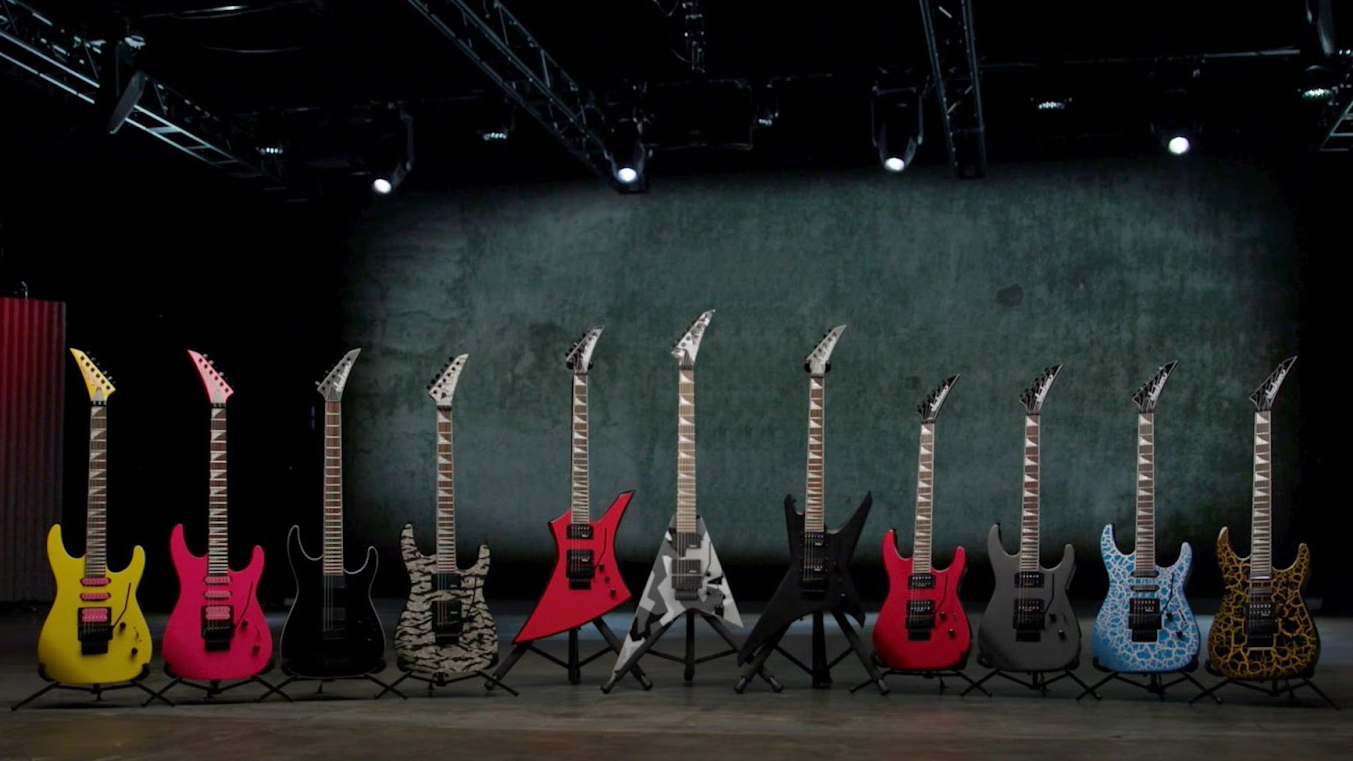
We're going to be looking at how can we get better use of the wood that we access
Fender has already addressed the diminishing supplies of swamp ash for guitar building, but what are the other challenges of sustainability right now – has rosewood moved to being more of a premium tonewood option for you?
"We've always utilised wood from sustainable forests. And you know the story with ash, just because the supply was limited. And then the situation with rosewood was actually not brought about by the music industry, it was brought about by the Chinese buyers purchasing Rosewood furniture. So we are always looking at the supply / demand situation for various wood types and looking at alternate wood forms.
"It is funny how the paradigms are breaking down, because I think a guitar that's on the wall [in this room] is an example of that. The definition of quality ebony was historically it had to be pure black. The only reason that was the case is because French buyers for ebony furniture said that's what they wanted. But it makes absolutely no difference to the tone of the tone of the guitar. So we said, use the whole tree.
"So when we use ebony going forward, it doesn't matter. In fact, I think it's more beautiful when you see this coloured gradation of the ebony. So again, we're also going to be looking at how can we get better use of the wood that we access. How can we use have heavier weight ash, still get the tonal quality but chamber it to keep the weight down. So we're constantly looking at looking at those things.
"I myself, I prefer a rosewood fingerboard over maple and willing to pay a premium for it. And we are kind of at that point now already, relative to say pau ferro, although I've always said if pau ferro was good enough for Stevie Ray Vaughan, it should be good enough any guitar player."
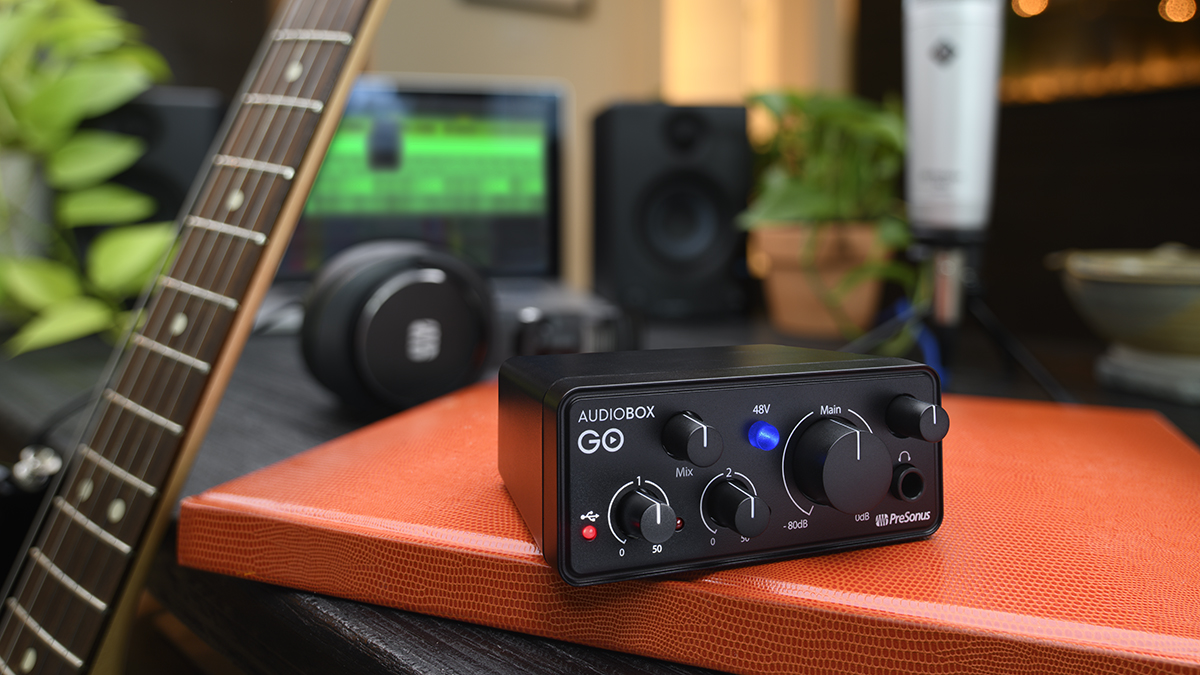
Our goal is to increase the total size of the market
When Fender's acquisition of PreSonus was announced in 2021, it raised the question of whether there's the potential to do with home recording what the company has done with learning via Fender Play. Is that something that Fender is considering?
"Let me step back a little first. When I joined a company, we didn't have a mission statement or a vision statement, not one we could articulate. Fender’s CMO Evan Jones, conducted a comprehensive piece of research and five key insights came out of it that shaped everything we've done for the last seven years.
"One was that 45% of the guitars we sold each year went to a new player, much higher than we would have guessed but they had a 90% abandonment rate. The 10% who stuck with it, the salmon that made it through the dam as it were, had a lifetime value of $10,000. They're buying five to seven guitars, multiple amps; basically driving the hardware side of the business.
"Our premise back then was, if we can just reduce the abandonment rate, we could double the size of the industry. So the assumption was there was a static number of new players coming in every year and if we reduced the abandonment rate, the hardware side would grow. And that was the impetus for Fender Play. We offered it for free during peak COVID and had a million people use it.
"A couple of years into the job, I met Phyllis Fender, Leo's widow, who reminded me of something Leo said in his later life in a kind of philosophical mode. He told Phyllis that he felt that artists were angels and that God had put him on Earth and to give them wings to fly. Tough to articulate your job description better than that. So we adopted that as a vision.
What we learned through COVID was we can actually bring more new players in. So if you both bring more in and reduce the abandonment rate, the industry will swell. So we changed our vision statement to ‘Fill the world with angels’.
"When you translate that to PreSonus, having dabbled in recording myself, I’ve never found a DAW I didn't need an MIT degree to actually use. You shouldn't need to spend more time figuring out how to use a DAW than you do creating. So my belief was that we can take the talent and the brand equity of PreSonus and create the equivalent of Fender Play for recording, i.e, a product that’s globally accessible and very intuitive to use.
"My assumption is, if we get more people started on recording, based on what happened with Fender Play, they'll gravitate up to actually paying for subscription services and buy more hardware.
"So again, our goal is to increase the total size of the market, and our approach is to fill the world with angels. Because again, the more people get comfortable with recording, the more likely they are to stick with the instrument and they're also more likely to stick with the hardware."
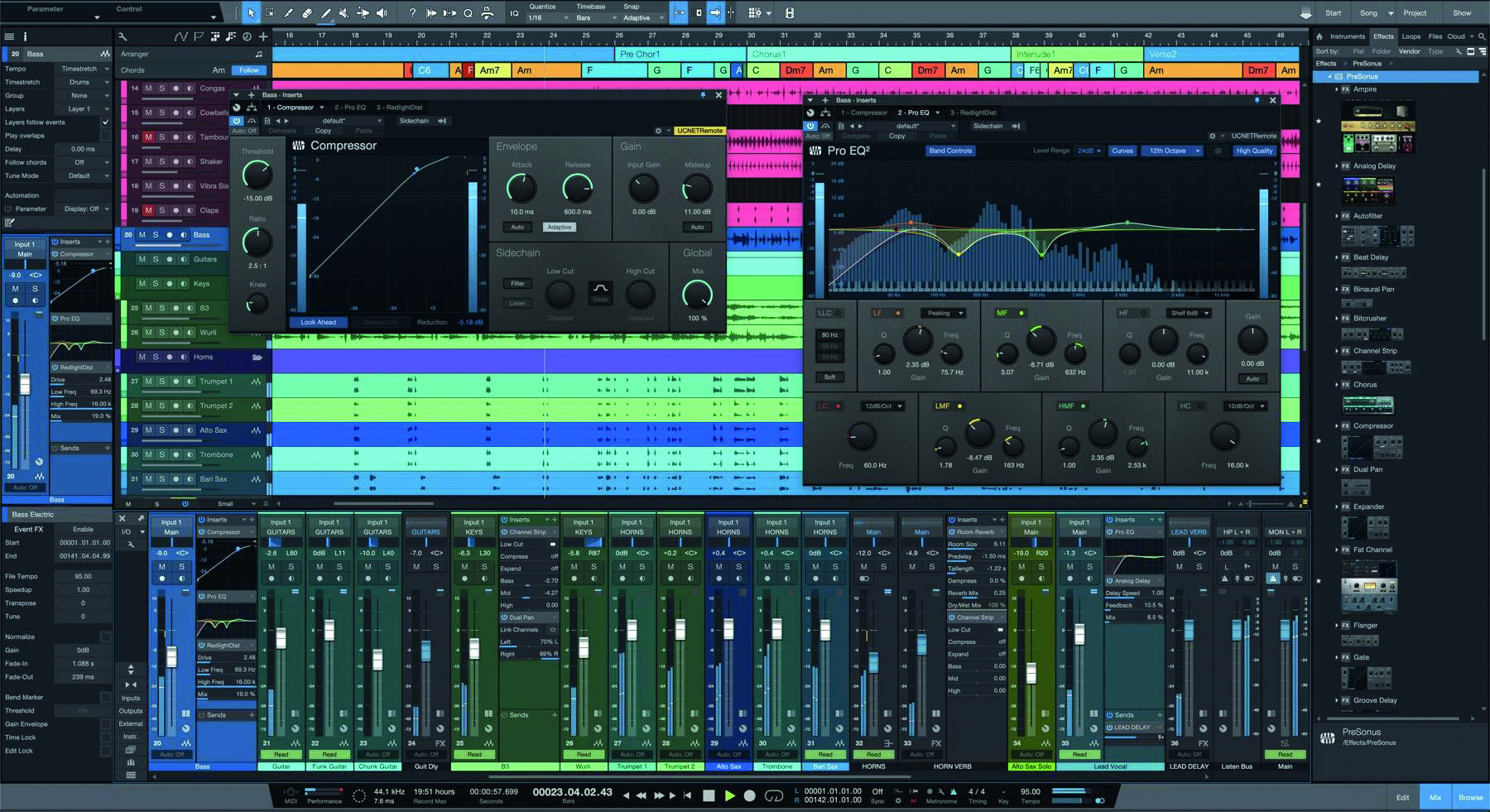
The simplest version of Studio right now has a 150-page owner's manual, which I have said to the team is 149 pages too many
Would this accessible software be based on the Studio One platform?
"Yes, I think for that with Fender one of the things I think we did well over the last few years is to create easily explainable platforms; where you can go from Squier Affinity to Mexican-made Fender Player to American Pro to Ultra. People understand what they're getting at each level and why they're paying a step up in price. I think what we need with Studio is the same thing. Which is there's a very simple, free, freely accessible product, then levels above that until eventually you get to the pro level, that’s easier said than done.
"When I joined the company, we had a solid entry-level acoustic guitar business. But I felt that we could do much better in terms of providing acoustic guitars that artists would use on stage. The brief was very simple, which was make an acoustic guitar the way that Leo would have made an electric guitar. That took us towards bolt-on construction, controls accessible on the front and the shape. Everything. It took us four years to go from the brief getting written to the finished product.
"So the brief, if you like, for an entry-level studio product would a digital equivalent of an analogue four-track recorder, right? And in fact, even that's too complicated because these days with digital, you can have a guitar and then hit one button and you'll get drums, bass. so you can sit down and just record intuitively.
"The simplest version of Studio right now has a 150-page owner's manual, which I have said to the team is 149 pages too many. Because you should be able to get out of the box, press one button and you're off to the races. So that's again, a very easy brief but very difficult to execute. But there has been a gravitational pull by aficionados to just keep jamming more and more features into DAWS, when in fact, I think you need to take away more features, make it simpler and more intuitive and less expensive."
Do you see this as something that could launch in 2023?
"I can't say exactly when because we're still working on that right now. I can say we're going to execute as quickly as humanly possible. And the German software team from PreSonus is working on it right now."
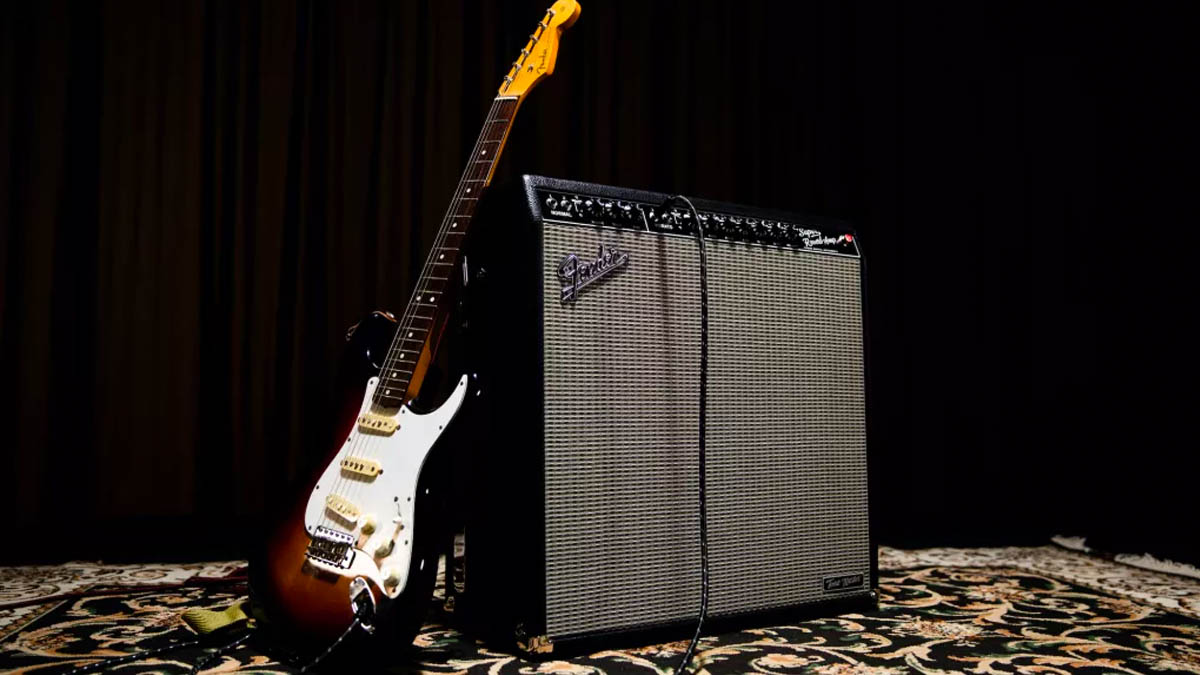
We’re putting more and more energy into the digital side of the equation because I think, as we learned from the Tone Master we're at the point digital reproduction of traditional is increasingly acceptable
I want to ask you about guitar amps because of the way the amp market is moving, and players are demanding more flexibility. Recently, Universal Audio released the Dream '65 amp pedal, based on the Fender 1965 Deluxe amp. If Fender had made that product, do you see it as something that could happily sit in the catalogue as an alternative to your amps?
"Well, I think if you want to categorise the way in which consumers use amps, you've got traditionalists who want to use functional tube amps. And then I think we've surprised those traditionalists with the Tone Master series. So it's interesting. Lenny Kravitz is on tour right now and he's a traditionalist but in his rig, he's got both.
"Because the other thing that we're learning is that, particularly if you're a touring musician with a tube amp, the tubes are likely to fail. And getting replacement tubes, particularly those that are coming out of Russia – good luck. And they're finding that when touring, the Tone Master works just as well.
"I had an interesting conversation with Edge and his guitar tech Dallas [Schoo], it was during the Joshua Tree [anniversary] tour, and I went backstage with him when he was in LA and he was showing me the setup. Live he's playing through four tiny amps; two fenders and two Voxs, 130 effects pedals; all of them analogue. And 23 different guitars, because this is how he rolls.
"Each song was a very precise combination of a guitar set exactly to the same volume, tone control, and from the 130 pedals, these 15 are going to be used on this song. So that's great when you're on tour and you have massive rigs to kind of carry from venue to venue. But the next night they were playing Jimmy Kimmel Live. And he said, "I can't take this to Jimmy Kimmel Live." So there he used modelling amps. And he goes, 'It's not the same, it's absolutely not the same'. But it's close enough. And it's the only practical way to perform in that type of venue. So I think there's room for both and we need to be present in both.
"We’re putting more and more energy into the digital side of the equation because I think, as we learned from the Tone Master we're at the point digital reproduction of traditional is increasingly acceptable. And in fact, in some cases even more desirable."
You mentioned tube supply, is there any other component supply that is still causing concern post- COVID lockdowns?
"I could spend the next hour listing that. There's concern across the board. Some components that last year cost 30 cents, this year are costing $30, so it's literally making bringing some products to market completely impossible.
"[Mustang] Micros are a good example. We're going to be challenged to get component parts at the level we’d like going forward. So we're always trying to pivot to find other suppliers. Internally, we refer it to Whac-A-Mole, because you feel like you've just solved one supply chain issue, from a component point of view, and then something else rears its ugly head. So I think we're going to be facing electronic component shortages at least through 2022, and probably into 2023, maybe even longer."
And that will dictate products being developed in the future.
"Yes, a good example of that would be PreSonus. It has very high quality digital mixers and for the last year, they've almost been the only game in town because the component costs got so high that other companies just said, 'We're not making them'. And we kept on going, and we're still keeping on going but it's a real challenge to try to bring those products to market at a price that works for consumers and a price that works for us as a manufacturer, that we can make some money on it.
"So it literally varies right down to the individual SKU level. But there's still really significant challenges out there on the component supply side. And it's funny where things will pop up. The winding materials in pickups, all of a sudden one day there's a challenge. You think there's not that many component parts in an electric guitar, and then you realise there is. All of a sudden magnets were in short supply.
"One of the things we're doing to try to satisfy our dealer base and ourselves is to get ahead of the curve on component buying, which is why the six months forward programme is so important. So that we have all of the component parts safely in stock in inventory, so that we can actually build the guitars to meet the orders that we've got."

Leo was a genius, because he made guitars both to be accessibly priced and to be functionally usable
It's interesting looking at festivals like Coachella this year and how many players, young musicians, are playing Fenders. What do you think the company has done right in the last few years that other brands haven't been as successful at?
"I think it's a number of things. And again, if you go back to punk, I think predominantly what contemporary guitarists want is something that's accessible, functional onstage, i.e doesn't go out of tune, which is a challenge with some of our competitors' models. Colour and marketing representation that says we acknowledge that you're part of the base. Not constantly looking in the rearview mirror at players that were important in the '70s or '80s.
"I don't think it's any more cosmic than that. I can tell having owned and played different brands as a working musician, [with] some of our competitors products trying to access the upper register with an 11-pound guitar, night after night, where you're struggling to keep it in tune when you're going onstage. Especially where I was playing in Scotland; you might be going from the snow to the van, to some hot steamy club and you're trying to keep a neck in tune all night long. Good luck with that. Whereas with a Strat I could depend on it, even with the tremolo bar I could be pretty confident I could keep it in tune.
"Leo was a genius, because he made guitars both to be accessibly priced and to be functionally usable. He was the best kind of listener to what working musicians were telling him about; 'Well, here's what I need'. He kept delivering on it. And he kept moving. It's interesting to me now, because I started with the Musicmaster. And you know, that was Leo in the '60s, even late '50s, developing a short-scale guitar for younger players who could bend the strings more easily. So that guitar got adopted more often by women. It wasn't designed for women, but it was more accessible to them in terms of weight, colour and more easy to master in terms of pain.
"I think some of it is just as simple as having products that fit the way that contemporary guitarists play. And again, if you go back to how players play, you could plug a Strat or a Tele and pretty much anything in the line into a pedalboard and it's gonna work.
"I think that one of the virtues of the Acoustasonic platform is whether you play in acoustic mode or electric mode, you can plug it into any type of effects pedal rig and you're not going to get screaming feedback, you're going get a pure sound the way that you want it."
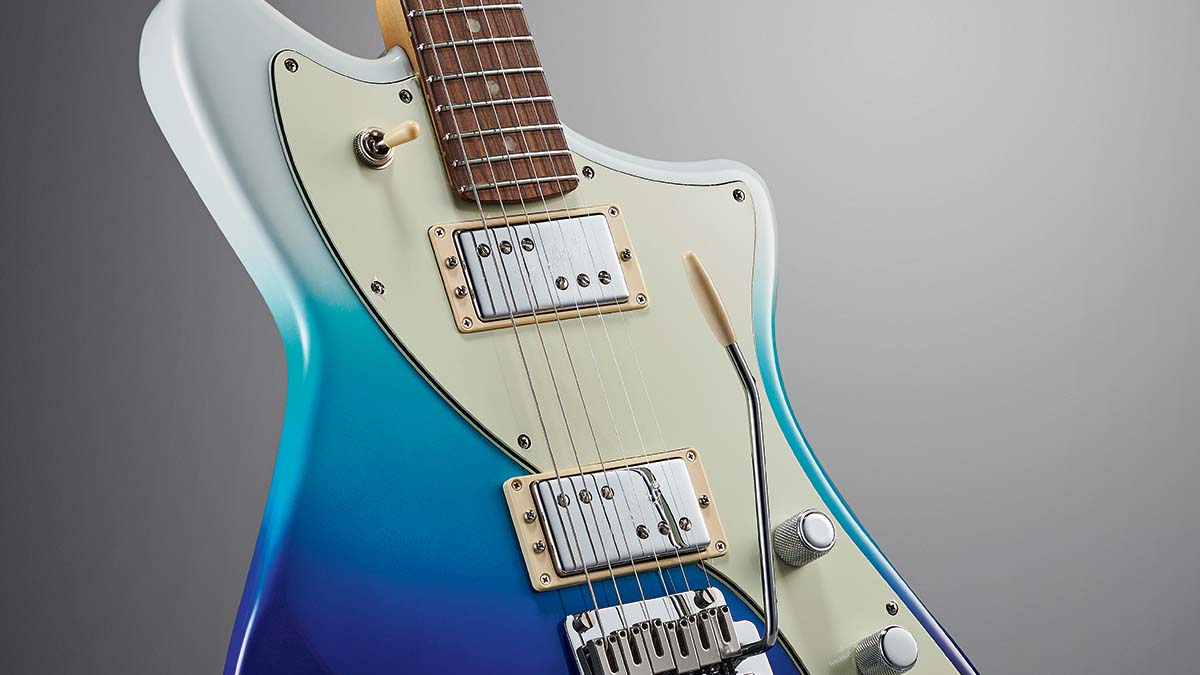
The Acoustasonic and the Meteora prove that Fender isn't afraid to be bold with guitar design. Do you think the newer generation of players is a bit more open and less conservative about history and heritage?
"I think the short answer to that is yes. Bass players have always been more open than six-string players. So we've seen almost explosive growth in both Jackson bass guitars and now the Meteora bass. The success of Meteora bass really surprised us; that really kind of blew up. A really, really successful launch.
"Acoustic players tend to be more conservative. And, as is always the case, a lot of aspiring musicians look to what people are playing on stage to get their cues. And what was interesting is when we launched the Acoustasonic our ambitions were really quite modest. It way surpassed our expectations but it was only starting to pick up steam right at the front end of COVID. So the Acoustasonic has been used widely, actually, in recording. And it's now only starting to get out there on stage.
You will definitely go from Corona and Ensenada to Southeast Asia for the Acoustasonic platform going forward
"The second thing is, what we really need to do is to have variations of the Acoustasonic platform that are price accessible. That means you've got to take it down to the under $1,000 price point. So we have that on the roadmap too. So you're able to find Fender going all the way down to $200, and you won't find the Acoustasonic going down to that price, but you will definitely go from Corona and Ensenada to Southeast Asia for the Acoustasonic platform going forward.
"Over time, you’ll see more headline players on stage using the Acoustasonic, Conan [Grey] at Coachella for example played his whole set on Acoustasonic. One thing we found is a lot of a lot of the players who adopted it early on, younger players, were often players who went back and forth on stage from electric to acoustic. They were much more comfortable going from a Strat to an Acoustasonic than they were going to a full-bodied, traditional acoustic guitar. We always knew it would take time but we’re way ahead of what our original expectations were."


It's interesting, because I only really fully understood the Acoustasonic idea when I plugged it in, and I had time with it. With people buying so much product online, that must be a challenge; how do you how you get the message of the product across if they're buying it from spec, not trying it in person.
"The Corona [US-made] Acoustasonic was truly a guitar that was made for, I would say, professional musicians. Somebody who would invest the time to learn and master the instrument. And, to your point, back in 2016 or it might have been 2015, about 70% of the product we sold was sold through a brick and mortar store. With 30% online. That has now reversed and if you think about how people research new products these days, they do it online. So we have invested a lot of energy in creating online marketing assets for our dealers, so that the consumer can take the time to learn about it on their website or our website before they make the product decisions.
"A good example is when we went to the Ensenada-made [Mexican, Player Series] Acoustasonic, we went to just a simple nine-volt battery. Uncomplicated and more intuitive. And I think, again, if you go to a future Southeast Asia version of the Acoustasonic; it will be even simpler, more intuitive, and easier to learn.
"I think the other kind of strange position we're in right now is, we have a very, very solid entry level, more traditional [acoustic] business. Although some people would argue that the California Series, just because the colour and six-on-a-side [headstock], is less traditional. I suppose that's true, but we gravitate to those players who come into Fender, who have nowhere to go other than Martin or Taylor.
"So we'd like to, in the future, whether they come in the traditional door, to be able to go somewhere higher price point with Fender. But we'd also like to create a door in the opening price point for them to come in to an Acoustasonic platform, and then go up the pyramid over time."
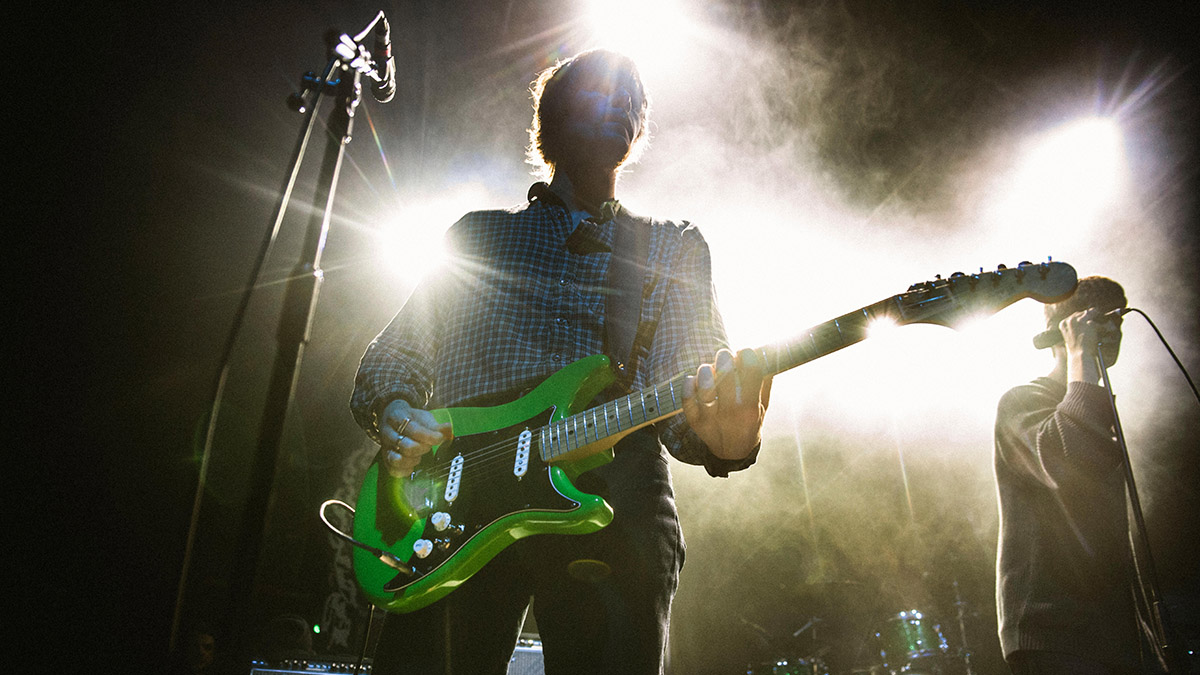
The Fender Next programme has been great at shining a light on upcoming guitar talent around the world. Do you have any more plans in how you can expand that reach with a generation that seems more open to different genres than ever before?
"We're definitely going to sustain and expand the programme. First of all, I think it's really caught the attention of the talent themselves and demand has outpaced supply. And we're having to almost limit the number of artists that we can work with just because of bandwidth in our organisation.
"Last time, pre COVID, I saw some of the Fender Next artists play was at South By Southwest and Sam Fender was there. I thought it was great just to see Sam Fender and Japanese Breakfast playing the same stage, both of them at that time Fender Next artists as they were starting to break out.
"It's great to be able to help artists develop their fanbase and develop relationships with them early in their career. And we're still working with Japanese Breakfast, for example. She was she was one of the lead artists we worked with on the launch of the Meteora because she changed from Jazzmaster. It worked for her. So yes, I'm excited about Next, we're going to sustain it and expand it."
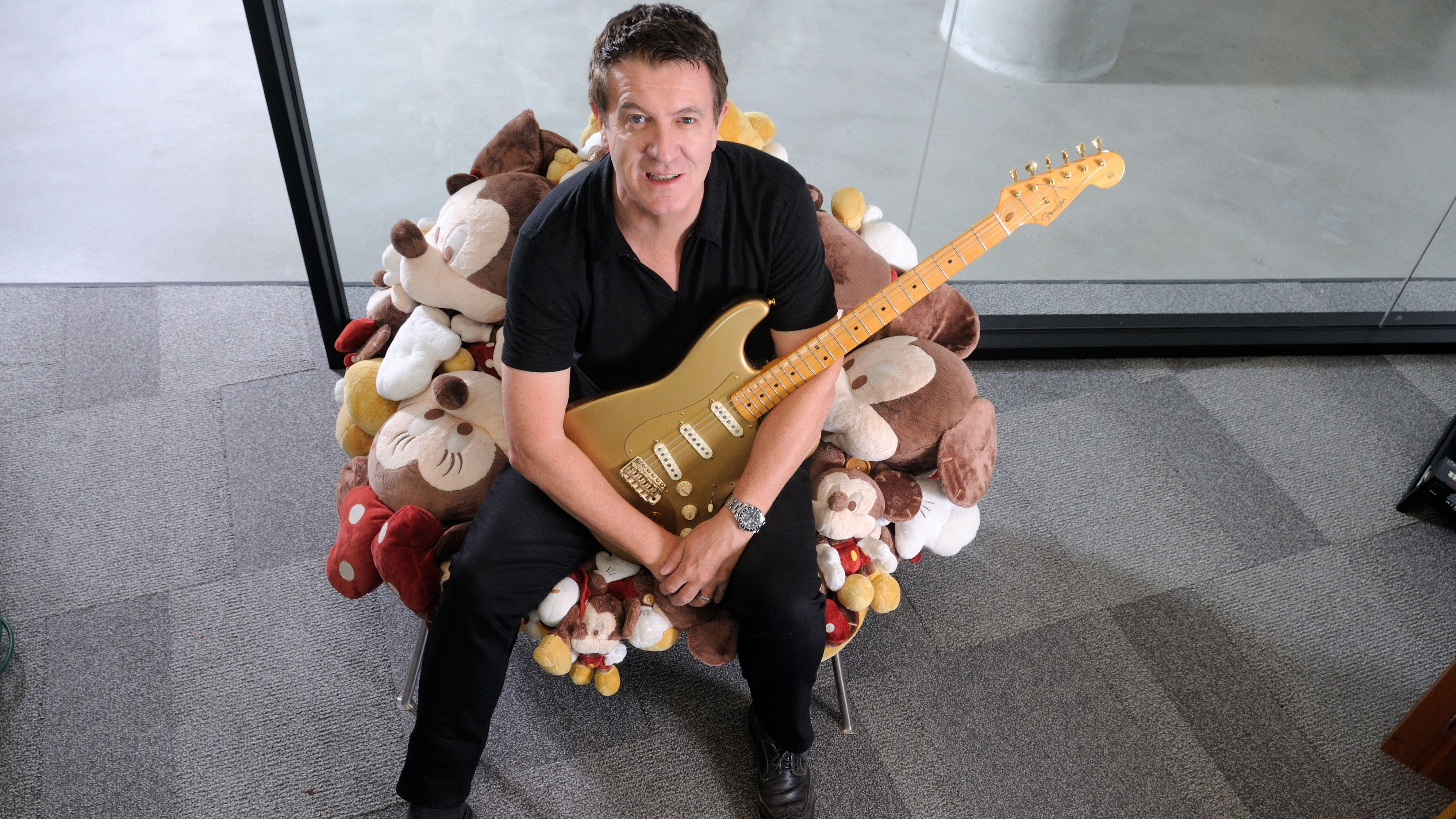
I had 60 guitars before I joined the company so I've got about 100 now
Finally, what are some of your own favourite Fender guitars?
"My go-to guitar is the Jim Root signature Jazzmaster because that's kind of what I know. It was so funny. Jim was in the office before we had made that guitar and I was already playing his signature Telecaster at that time and my band was going to do a cover of [Slipknot's] The Devil In I and he just happened to walk into the office. I said, "Jim, this song is in Drop A. How the hell does your guitar tech setup your Tele to get it down to drop A." He said, "He doesn't do shit – he just tunes it to drop A and it works." So I did and it worked. So anything that has me down in those kind of tunings, I go to one of his two signature guitars and I need the fixed tailpiece because you can't have anything that's floating with those type of tunings.
"If I want to do something that's got any type of whammy on it I actually go to Tom Morello's signature Strat because I've got everything; I've got a kill switch, I've got a Floyd Rose and a rosewood 'board. I've got a high output pickups – it's perfect for me.
"And then if I'm in more of a kind of bluesy mode, before I joined the company and I was fortunate to buy them at the time I bought them, but I've got a '52 Tele and a '54 Strat. So when I'm in a bluesy mode I kind of go back back to the archive and most often play the '54 Strat because I grew up with Strats and never really understood the Tele until recently.
"I've kind of come to the Tele [later] because it was never really in my in my repertoire. But the guy that got me into the Tele was Chris Shiflett. Because when I saw what he was doing with it I picked it up. Again, it has humbucker pickups just kind of did the job.
"So it depends on what night but it's great. But we're just returning the collection back to the office. I had 60 guitars before I joined the company so I've got about 100 now. In the long hallway where my where my office is, although I haven't been there much of the last couple of years, we have the collection display because it represents our history.
"I've got 1950 lapsteel and guitars that are really great and some that are not so great from the CBS era. I have them because it's important, to see the lineage. I encourage everyone to pick them up and play them – it's not often you get to play a '52 Tele. Plug it in and you've played a piece of history there. So it's great that people have access to those guitars."
- For more information visit Fender.com

Rob is the Reviews Editor for GuitarWorld.com and MusicRadar guitars, so spends most of his waking hours (and beyond) thinking about and trying the latest gear while making sure our reviews team is giving you thorough and honest tests of it. He's worked for guitar mags and sites as a writer and editor for nearly 20 years but still winces at the thought of restringing anything with a Floyd Rose.